Finding a delicious Oat Bread that is gluten-free, vegan, and won’t spike your blood sugar can feel impossible. So many store-bought options are either too dry, too sugary, or full of processed starches that do more harm than good.
This recipe changes that.
No yeast. No refined sugar. No tricky techniques. Just simple, wholesome ingredients that work together to give you a bread you’ll actually look forward to eating.
Let’s make healthy eating simple again.
Table of Contents
Why This Oat Bread is Excellent for Blood Sugar Management
This Oat Bread is more than just gluten-free and vegan. It’s built from the ground up to support stable blood sugar levels. Here’s how each ingredient and technique helps keep your energy steady and your health on track.
Soluble Fiber Slows Down Sugar Spikes
Oats are rich in a type of soluble fiber called beta-glucan. This fiber forms a gel-like texture in the gut, which slows down how quickly your body digests food. As a result, carbohydrates break down gradually. This means no sudden jumps in blood sugar after eating a slice of this Oat Bread.
Low-Glycemic Flour Choices
Many gluten-free breads use starchy flours like white rice flour or tapioca starch. These spike blood sugar fast. This recipe avoids those. Instead, it focuses on oat flour which has a lower glycemic load. It digests more slowly and helps keep blood sugar balanced.
High-Fiber Binders Replace Eggs and Gluten
Without gluten or eggs, most breads fall apart or feel heavy. That’s where psyllium husk and flaxseed come in. These ingredients not only hold the bread together but also add extra fiber. That fiber further supports blood sugar stability while improving digestion.
No Refined Sugar Means No Crash
Many recipes sneak in maple syrup or coconut sugar. This one doesn’t. Instead, it gives you tested alternatives like stevia or monk fruit sweetener. These options add sweetness without raising your glucose levels. You get the taste without the risk.
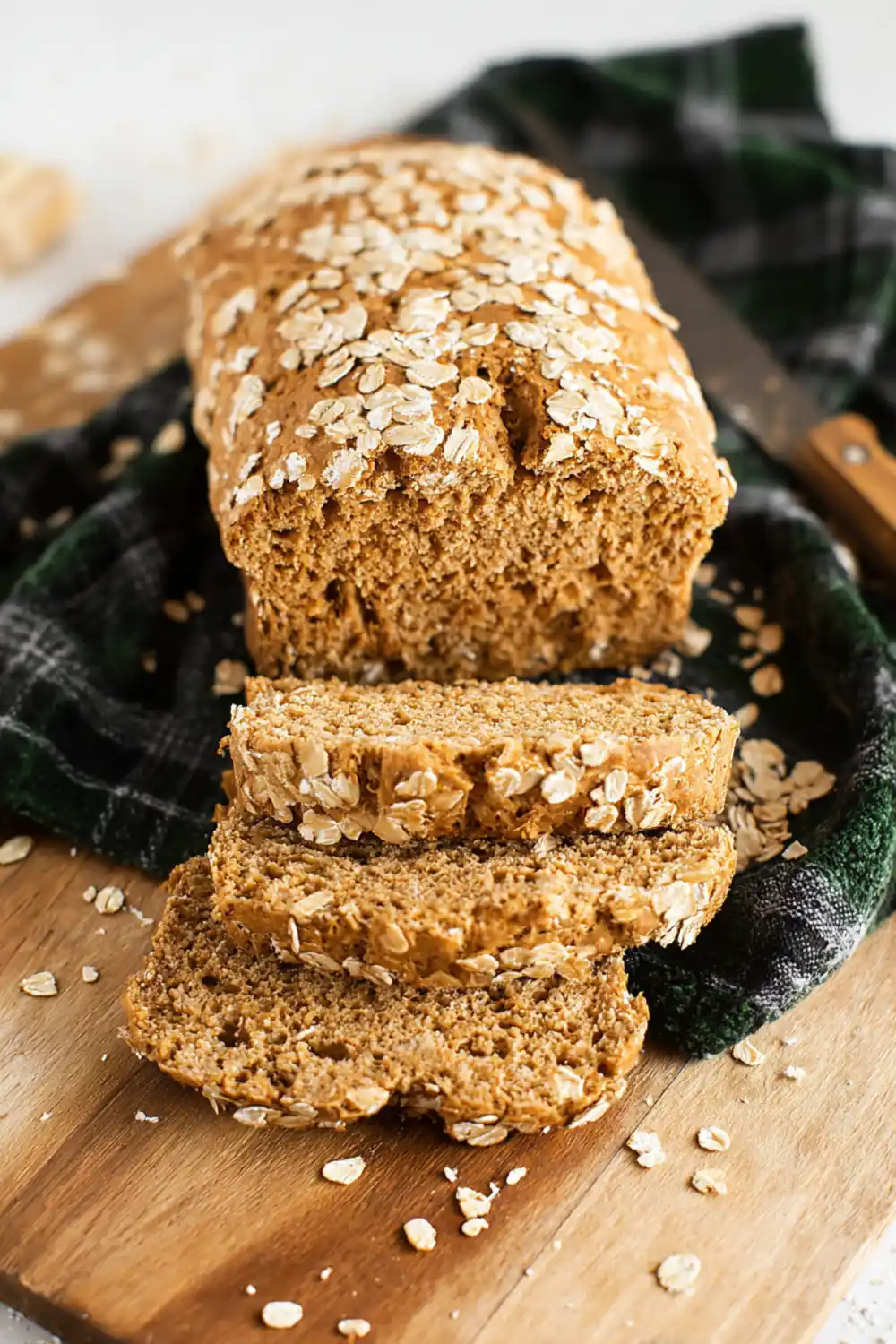
This Oat Bread doesn’t just meet basic dietary needs. It actively supports better blood sugar control using smart, plant-based ingredients.
⭐️⭐️⭐️⭐️⭐️
“Including oats in your diet supplies rich dietary fiber, which helps maintain stable blood sugar levels and supports gut health. Oats remain a solid choice even for people managing type 2 diabetes.” Registered dietitians, Real Simple
You’ll Also Love
➤ Gluten-Free Vegan Almond Bread
➤ Gluten-Free Vegan Irish Soda Bread
➤ Gluten-Free Vegan Blueberry Banana Bread
Ingredients Needed
To make this soft and hearty Oat Bread, you’ll need simple ingredients that support blood sugar control while keeping the texture satisfying and the flavor balanced. Here’s what you’ll need, grouped for clarity:
For the Base:
- 1 cup plus 2 tablespoons gluten-free rolled oats
- 1 cup unsweetened almond milk or coconut milk
Natural Binders and Moisture:
- 1 tablespoon white vinegar
- 1/4 cup ground golden flaxseed meal
- 1/4 cup unsweetened applesauce
Healthy Fats and Sweetener:
- 1/4 cup grapeseed oil or sunflower seed oil
- 1/2 cup coconut sugar or a diabetic-friendly substitute like erythritol or monk fruit blend
Dry Ingredients for Structure and Lift:
- 1 and 3/4 cups gluten-free flour blend (such as Sarah’s mix)
- 1 teaspoon baking powder
- 1/2 teaspoon baking soda
- 3/4 teaspoon sea salt
These ingredients come together to create an Oat Bread that’s full of fiber, naturally sweetened, and perfect for those managing diabetes. Each item serves a purpose, whether it’s adding texture, structure, or nutrition.
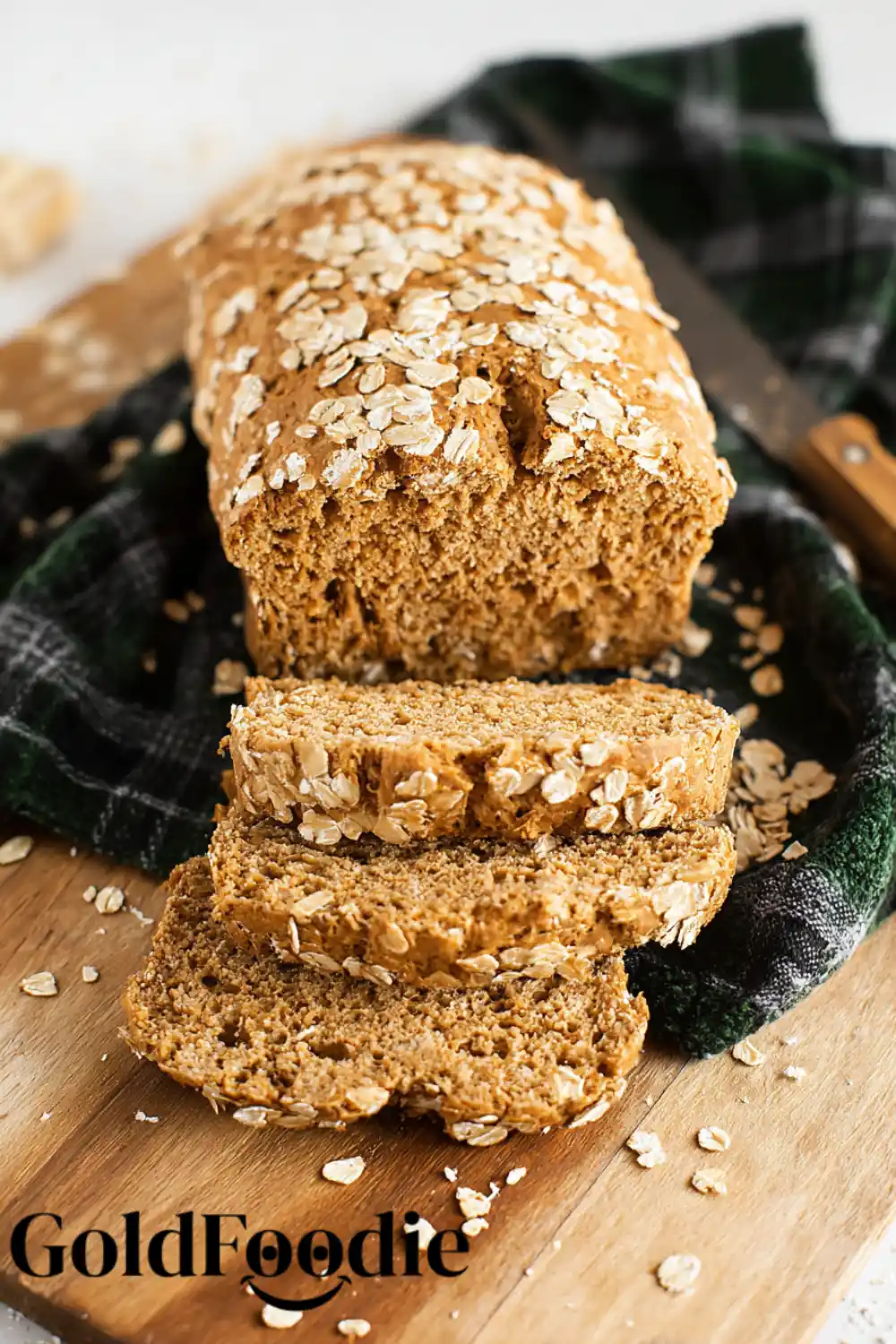
How to Make Oat Bread
Making this diabetes-friendly Oat Bread is straightforward and requires no advanced baking skills. Just follow these simple steps to get the best results every time.
Step 1: Preheat and Prepare Your Pan
Preheat your oven to 375 degrees Fahrenheit. Lightly grease a 9 by 5-inch loaf pan or line it with parchment paper for easy removal after baking.
Step 2: Soften the Oats
In a large mixing bowl, combine 1 cup of the rolled oats with the almond milk. Let this mixture sit for about 10 to 15 minutes. This softens the oats, helping them blend smoothly into the batter and improving the final texture of your Oat Bread.
Step 3: Mix the Wet Ingredients
To the softened oat and milk mixture, add the coconut sugar, ground flaxseed, applesauce, oil, and vinegar. Stir well until all ingredients are evenly mixed. This step lays the foundation for a moist and flavorful bread.
Step 4: Add the Dry Ingredients
Sprinkle the gluten-free flour blend, baking powder, baking soda, and sea salt into the bowl. Mix gently but thoroughly until the batter is fully combined. Avoid overmixing, which can make the bread too dense.
Step 5: Fill the Pan
Scoop the batter into your prepared loaf pan. Spread it evenly using a spatula. Sprinkle the remaining 2 tablespoons of rolled oats across the top for a rustic look and extra texture.
Step 6: Bake Until Golden
Place the pan in the preheated oven and bake for 50 to 55 minutes. The bread should have a golden crust and a firm center. A toothpick inserted into the middle should come out clean.
Step 7: Cool Before Slicing
Allow the Oat Bread to cool in the pan for 10 minutes. Then transfer it to a wire rack and let it cool completely before slicing. This helps set the structure and prevents a gummy texture.
Each step is designed to give you the perfect balance of softness and stability while keeping it diabetic-friendly.
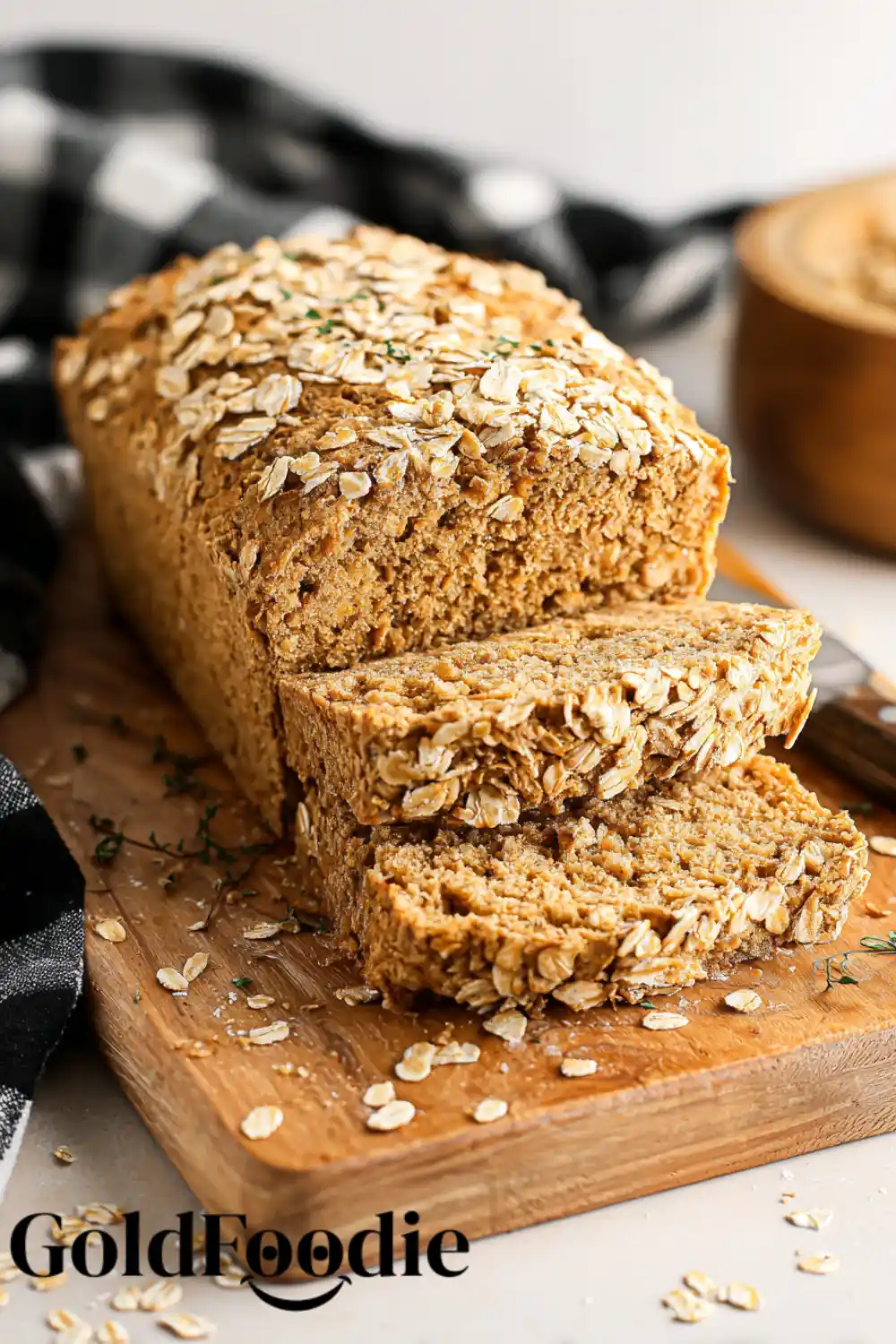
Gluten-Free Vegan Oat Bread (Diabetes-Friendly)
Ingredients
Method
- Preheat your oven to 375°F (190°C). Grease a 9×5-inch loaf pan or line it with parchment paper.
- In a large mixing bowl, combine 1 cup of rolled oats with the almond milk. Let sit for 10–15 minutes to soften.
- Add coconut sugar (or substitute), flaxseed meal, applesauce, oil, and vinegar to the oat mixture. Stir well.
- Add gluten-free flour, baking powder, baking soda, and sea salt. Mix gently until fully combined.
- Transfer the batter to your prepared loaf pan. Smooth the top and sprinkle with the remaining 2 tablespoons of oats.
- Bake for 50–55 minutes, until golden and a toothpick comes out clean.
- Cool in the pan for 10 minutes, then transfer to a wire rack to cool completely before slicing.
Notes
Nutrition Facts (Per Slice)
Calories:165 kcal | Total Fat:6g | Saturated Fat:0.5g | Total Carbohydrates:24g | Dietary Fiber:5g | Net Carbohydrates:19g | Protein:3g | Sugar:4g | Sodium:190mgComplete Nutritional Information (Per Slice)
Understanding what goes into each slice of your Oat Bread is key for managing blood sugar. This breakdown focuses on the values that matter most to people with diabetes, especially net carbohydrates.
Here’s the estimated nutritional information for one slice, based on a loaf cut into 12 slices:
| Nutrient | Amount per Slice |
| Calories | 165 |
| Total Carbohydrates | 24g |
| Dietary Fiber | 5g |
| Net Carbohydrates | 19g |
| Protein | 3g |
| Total Fat | 6g |
Net Carbohydrates are calculated by subtracting dietary fiber from total carbohydrates. This is the number that impacts blood sugar and insulin the most.
Disclaimer: Nutritional values are estimates and may vary based on specific ingredients or brands used. For best accuracy, use a nutrition calculator with your chosen products. This Oat Bread is crafted to provide fiber-rich, balanced nutrition with every slice.
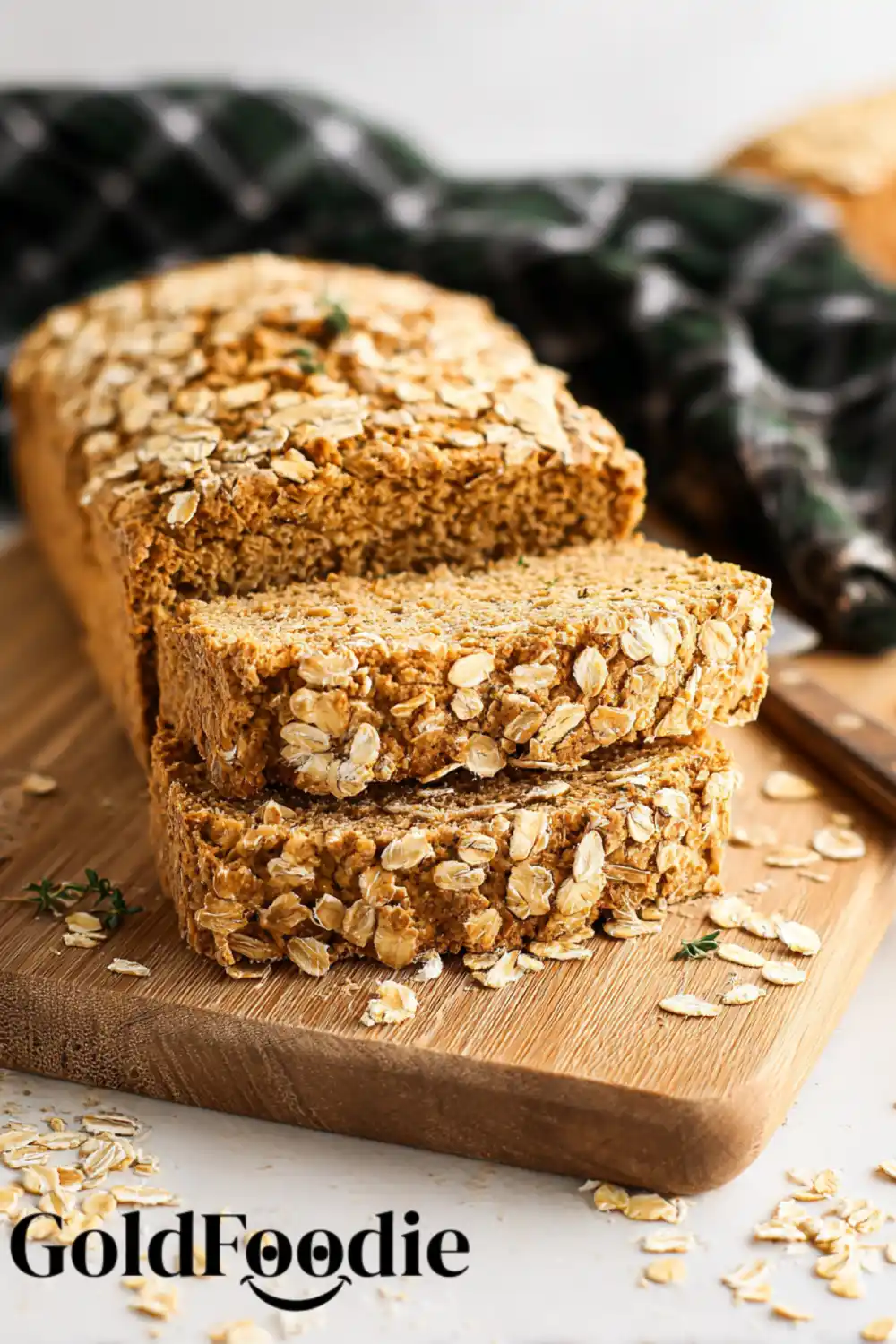
Storing, Freezing, and Serving Your Low-Glycemic Bread
Keeping your Oat Bread fresh and easy to enjoy is simple with the right storage steps. Here’s how to get the most out of every loaf.
Storage at Room Temperature
Once fully cooled, store your Oat Bread in an airtight container at room temperature. It stays fresh for about two to three days. Keep it in a cool, dry spot away from direct sunlight.
Freezing for Longer Shelf Life
For best results, slice the entire loaf before freezing. Wrap each slice in parchment paper or place parchment between slices. Then seal everything in a freezer-safe bag or container. This method lets you grab one slice at a time without thawing the whole loaf.
Serving Suggestions for Balanced Blood Sugar
You can enjoy this Oat Bread in many ways while keeping your meal diabetes-friendly.
- Toast and top with smashed avocado and a pinch of sea salt
- Spread with natural, no-sugar-added peanut butter or almond butter
- Pair with a tofu scramble for a complete, fiber-rich breakfast
- Build an open-faced sandwich using hummus, cucumber slices, and cherry tomatoes
This Oat Bread makes it easy to create satisfying meals that don’t spike your blood sugar. Keep a few slices on hand for quick, nourishing options any time.
Helpful Notes
- Coconut sugar adds a mild caramel flavor and works well in this Oat Bread. However, if you’re avoiding coconut sugar or prefer a lower glycemic option, feel free to swap it with brown sugar or a measured low-glycemic sweetener like erythritol or monk fruit.
- Do not use liquid sweeteners such as maple syrup or agave. These can throw off the texture and make the Oat Bread too moist or heavy.
- Letting the oats soak before mixing helps soften their texture, which is important for the structure of the final loaf.
- Always allow the bread to cool fully before slicing. Cutting too early can result in a gummy or undercooked center.
- Use certified gluten-free oats and flour blends to avoid cross-contamination if you’re baking for someone with celiac or gluten sensitivity.
These tips help you get the best texture, flavor, and blood sugar-friendly results from every loaf of Oat Bread.
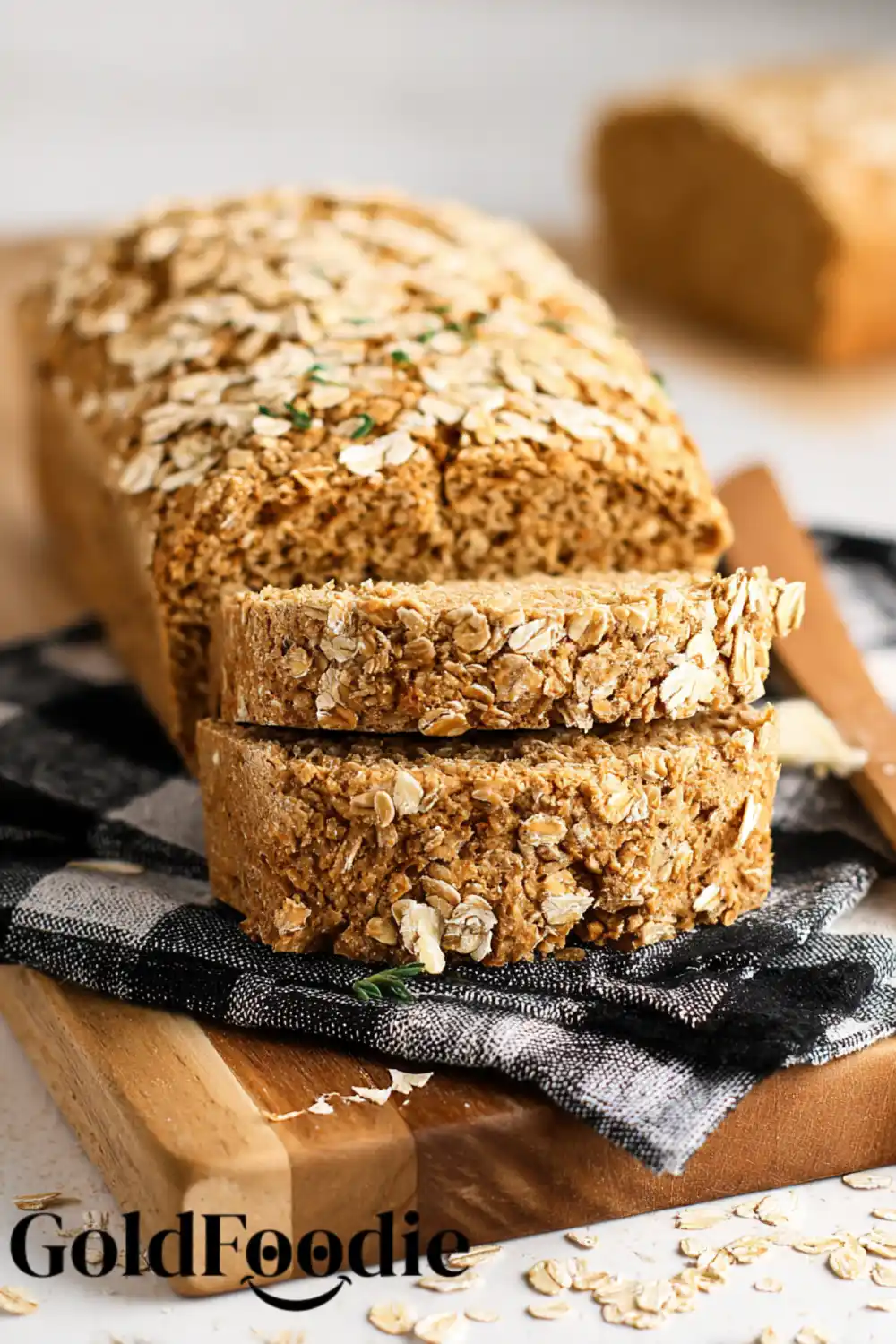
Frequently Asked Questions (Diabetic Baking Edition)
Can I use a different type of flour?
Yes, you can try flours like buckwheat or almond flour. Buckwheat keeps the recipe gluten-free and still supports a hearty texture. Almond flour lowers the carb count but may change the structure and make the Oat Bread more delicate. Always adjust liquids slightly when switching flours.
Why is my bread gummy inside?
This usually happens when the bread is sliced too early. Let your Oat Bread cool completely on a wire rack before cutting. Also, double-check your measurements, especially with liquid ingredients, to avoid a soggy center.
Is this bread suitable for Type 2 Diabetes?
Yes, this Oat Bread is designed for a low glycemic response. It includes high-fiber ingredients like oat flour, flaxseed, and psyllium husk that help reduce blood sugar spikes. However, it’s always a good idea to consult with a doctor or dietitian for personalized advice.
Can I make this recipe without any sweetener?
Yes, you can skip the sweetener. The bread will have a more savory flavor but will still be soft and satisfying. It’s a great option if you’re pairing the bread with savory toppings.
What is the best way to toast this bread?
You can toast this Oat Bread directly from frozen or fresh. Use a toaster or a hot skillet for a golden crust and warm center. Avoid microwaving, as it may soften the crust too much.
These answers help make the baking process smoother and give you more control over how you enjoy your Oat Bread every day.
Leave a Comment and Rating!
Tried this Oat Bread recipe? Share your experience in the comments below. Your feedback helps others decide if this recipe is right for them.
Rate the recipe using the stars to let us know how it turned out. Was it soft and hearty? Did you use a sweetener substitute or try a flour variation?
Your voice helps grow our community and improves every future loaf of Oat Bread for readers just like you. Let us know what you think.
Final Thoughts
This Oat Bread is more than just a gluten-free and vegan option. It’s a thoughtful, blood sugar-friendly solution for anyone who wants to enjoy bread without the worry. With high fiber, no refined sugars, and simple ingredients, it checks all the boxes for health, taste, and peace of mind.
If you’ve baked this Oat Bread, don’t forget to leave a comment and a star rating. Share it on Pinterest or Facebook so others can try it too.
What’s your favorite way to serve this bread? Let us know below and inspire someone else’s next healthy meal.
Diabetes Nutrition Specialist | Healthy Diet Advocate | Founder of GoldFoodie.
My passion for nutrition began with a deeply personal journey supporting my father through his battle with diabetes. Watching his daily struggles made me realize how powerful the right food choices can be in improving quality of life. That experience drove me to dedicate my career to helping others live healthier, more balanced lives.






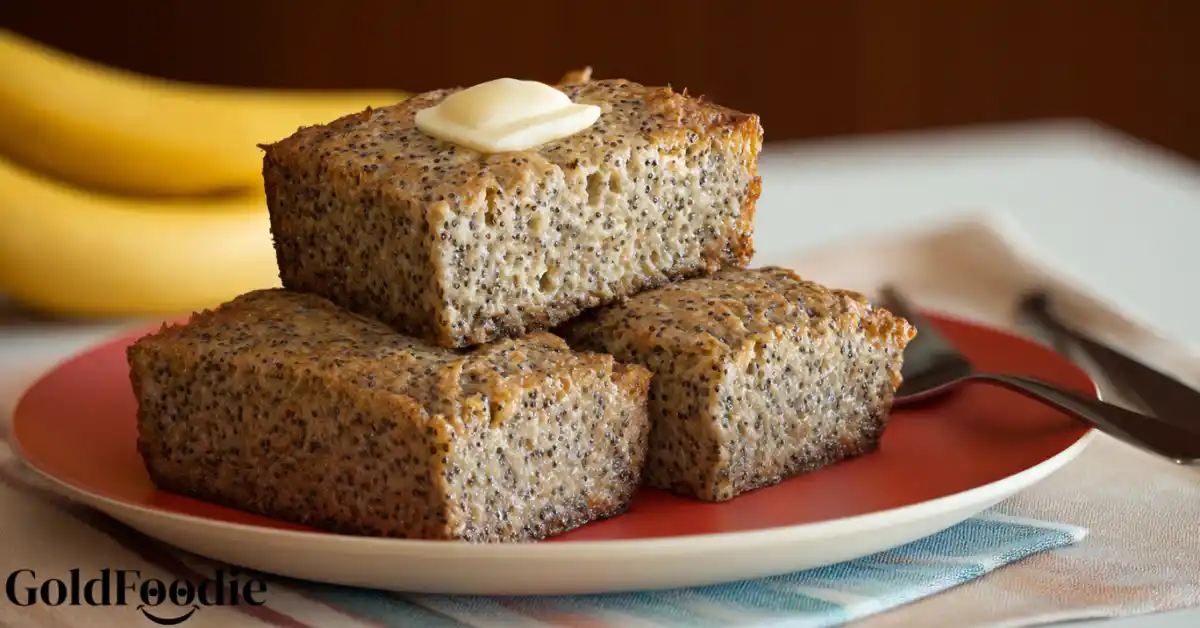
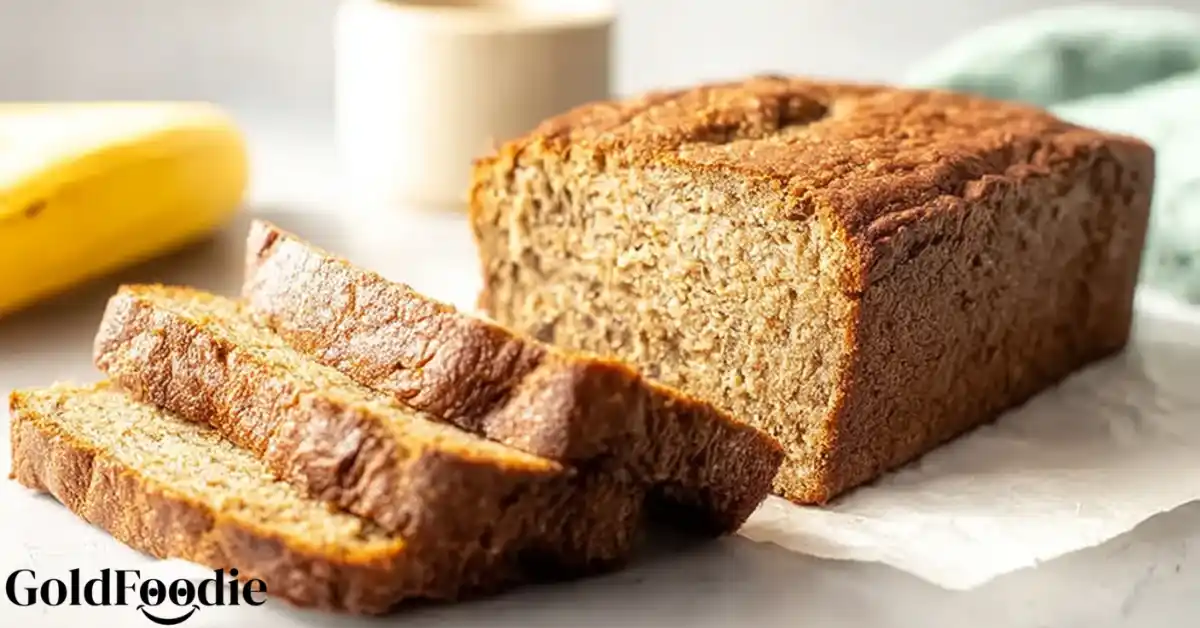
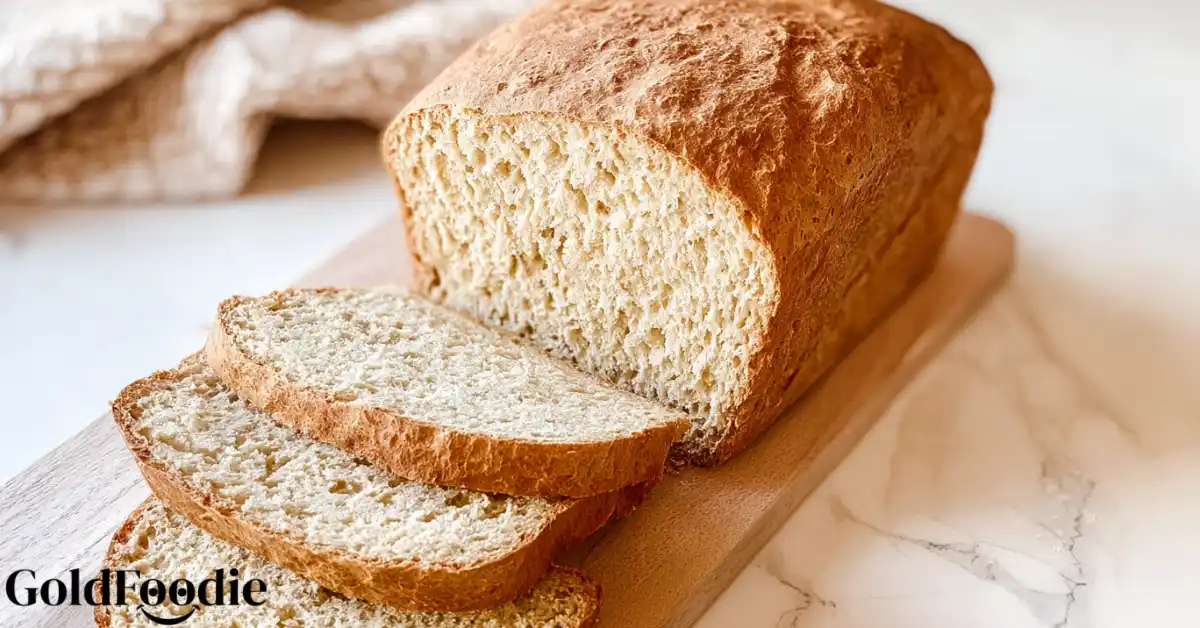
5 thoughts on “Gluten-Free Vegan Oat Bread Recipe”